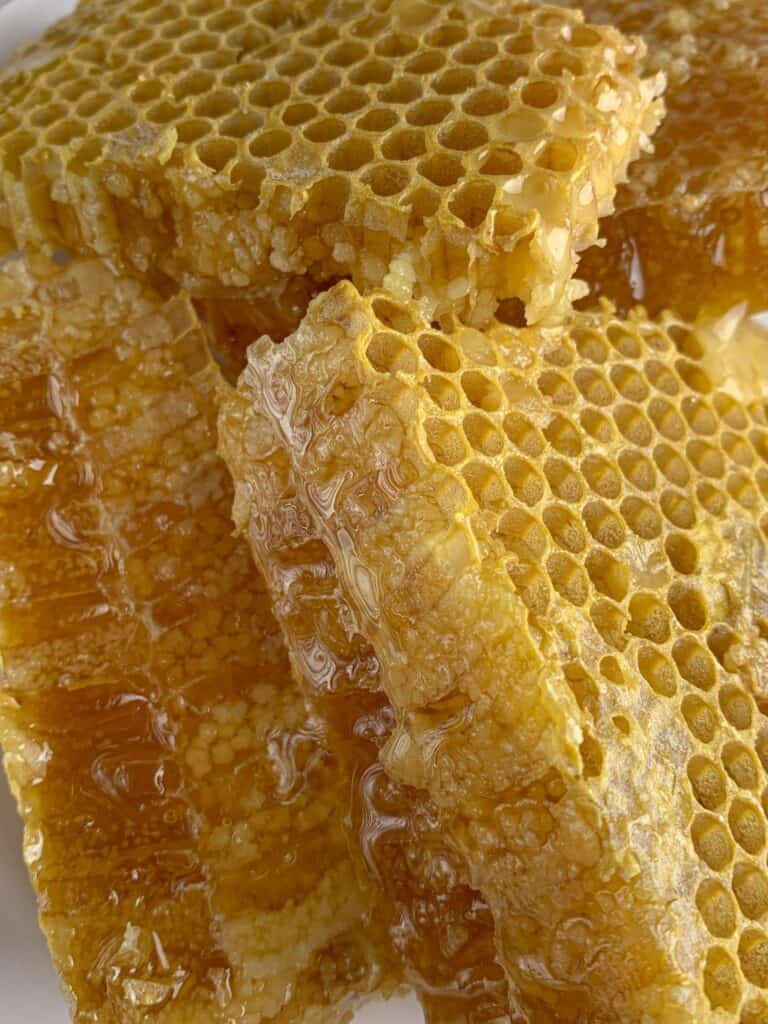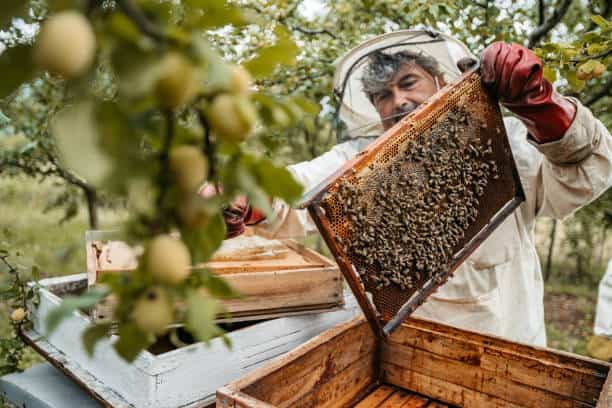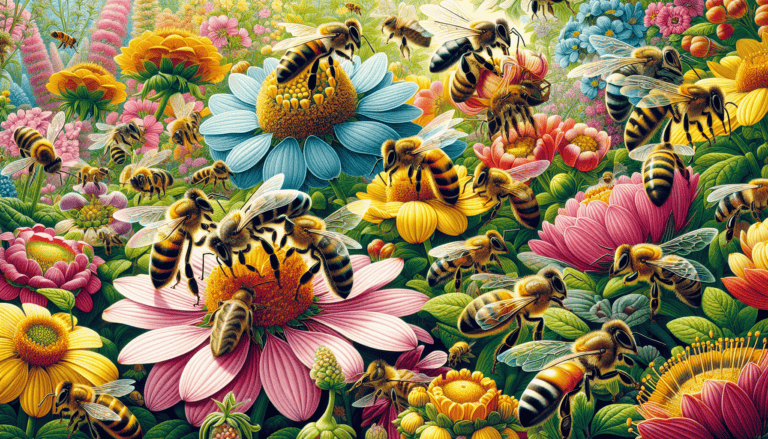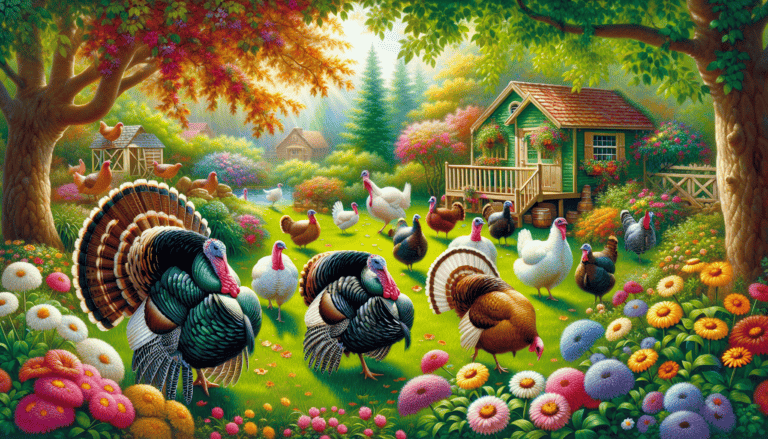Understanding the Different Types of Hay for Your Livestock
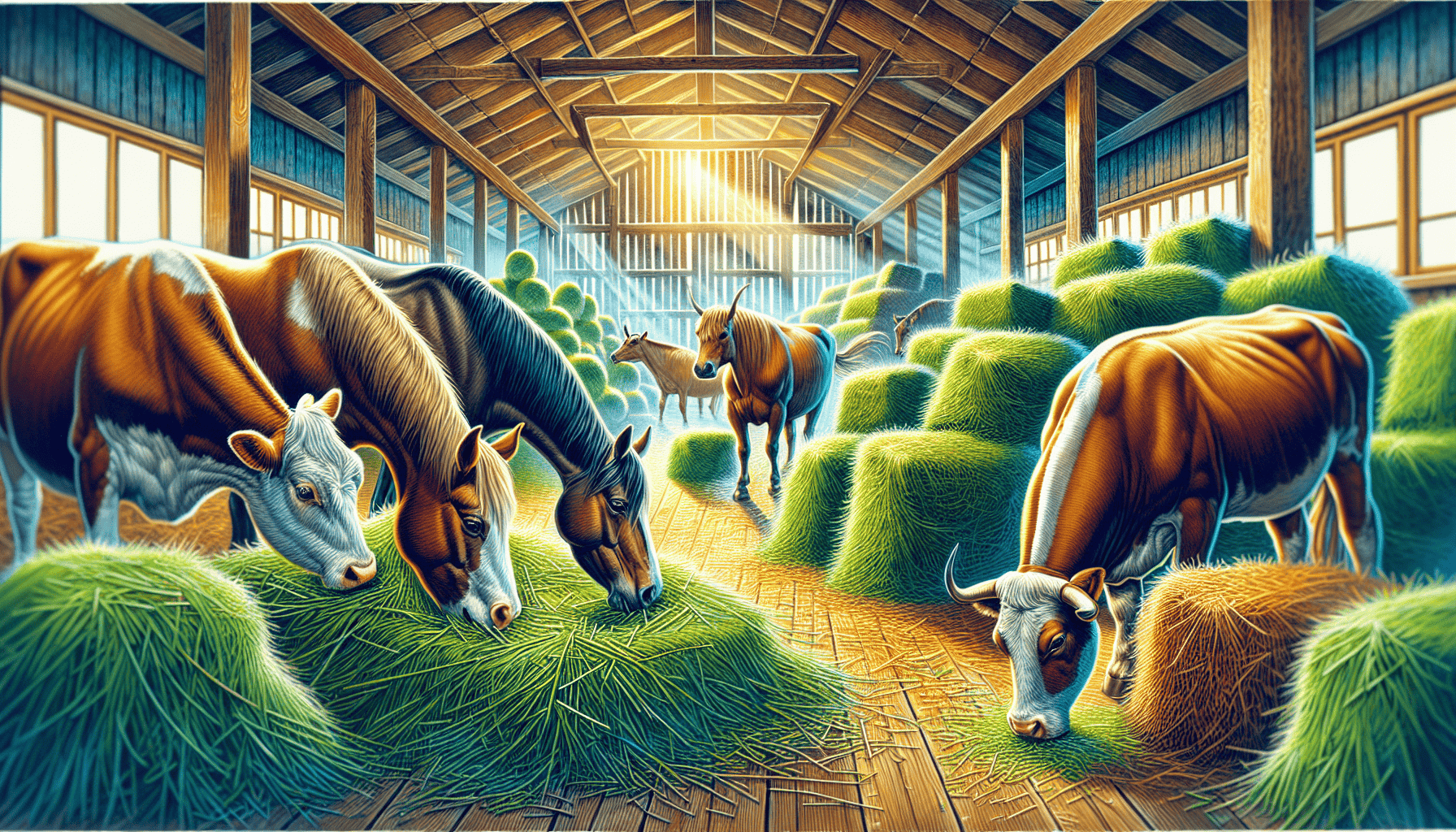
If you’re pondering about the most suitable type of hay for your animals, it’s crucial to grasp the distinctions between various types of hay—such as grass, legume, and cereal grain. This article is crafted to guide you through each kind and discuss their advantages for a range of livestock.
Key Takeaways
There are three main types of hay for livestock: grass hay, legume hay, and cereal grain hay, each with distinct nutritional benefits.
Selecting the right hay requires consideration of the livestock’s specific dietary needs and the hay’s quality to ensure health and productivity.
Quality factors such as harvesting methods, storage conditions, and visual inspection are crucial in maintaining hay’s nutritional value and safety for livestock.
Types of Hay for Livestock
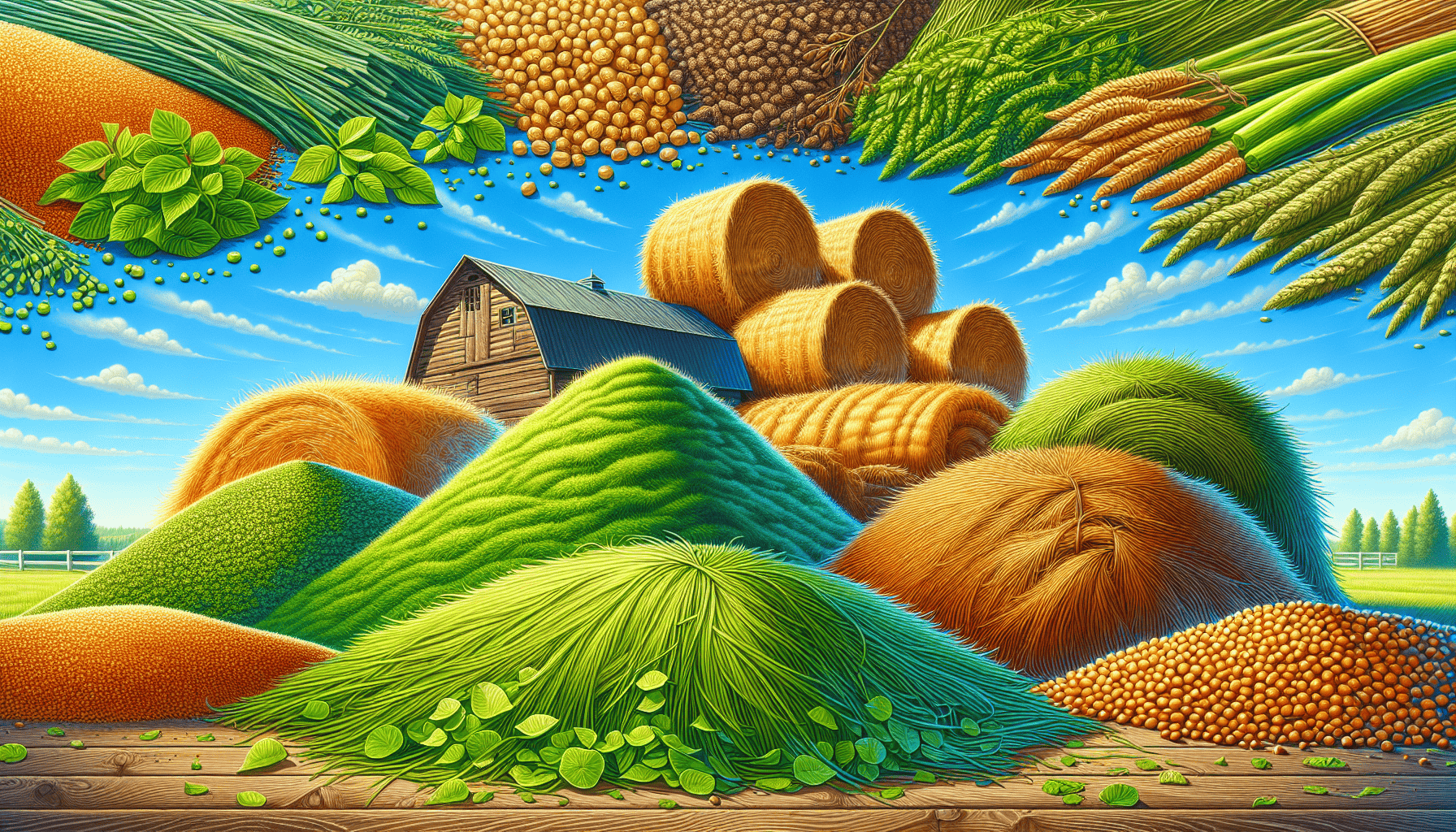
Livestock can be fed with three primary kinds of hay: grass hay, legume hay, and cereal grain hay. These types have unique nutritional benefits and profiles. It’s crucial to select the appropriate one that matches the particular requirements of your livestock.
Although the state and quality of the hay typically surpasses whether it originates from a type of grass or legume in importance, grasping these distinctions aids in making a well-informed choice when purchasing fodder for your creatures.
Grass Hay
Various types of grass hay, including Timothy, brome, orchard grass, and bluegrass, are well-suited for different environments and the dietary needs of diverse livestock. These hays are prevalent across many areas and typically contain protein levels ranging from 6% to 10%, making them versatile in their use among various animals. In northern regions where conditions can be harsher, Timothy grass is often preferred due to its robustness and beneficial nutritional composition.
Grass hays such as ryegrass, coastal Bermuda, fescue varieties, and bromes also provide valuable nutrients. When selecting a good quality grass hay it’s crucial to choose options that are free from dust and mold since these elements could pose health risks to animals. It is important that the hay appears green with plenty of leaves. This appearance indicates a richer nutrient profile which is essential for maintaining healthy livestock.
Legume Hay
Alfalfa hay, a type of legume hay, is highly regarded due to its substantial protein and calcium content. This makes it an ideal feed for dairy cows, pregnant or lactating mares, and other livestock with high nutritional needs. Typically, alfalfa’s protein concentration ranges from 16% to 18%, with the average second-cut alfalfa containing about 16% crude protein. Such nutrient-rich alfalfa hay aids in meeting the nutritional requirements necessary for milk production in lactating animals.
Dairy cows and similar animals that demand increased nutrition greatly benefit from consuming fine-textured, palatable alfalfa hay. In selecting good legume hay, one should look out for bales that are leafy and green with a minimal presence of dust or mold—indicators of quality legume hay that can substantially influence your livestock’s health and output levels positively.
Cereal Grain Hay
Oat hay, as well as barley straw, present viable options for feeding livestock. The nutritive value and the appeal of these cereal grain hays to animals are heavily dependent on when they are harvested. Ideally, harvesting should occur while the grains are young and not fully matured in order to preserve their nutritional content and taste.
Administering cereal grain hay carries potential hazards, especially if obtained in post-drought conditions. Under such circumstances, heightened nitrate concentrations can accumulate within the crop leading to a threat of nitrate toxicity for the consuming livestock.
Of all cereal grains available for animal feeding, oat straw is typically favored by cattle due to its superior palatability. It remains crucial. Every batch of this type be thoroughly evaluated ensuring it is both safe and good quality before offering it up as sustenance for your herd.
Selecting the Right Hay for Specific Animals

Choosing appropriate hay for your livestock necessitates a careful evaluation of their unique nutritional requirements and well-being. The category of hay, along with its caliber and state, are pivotal elements that can significantly influence the well-being and output levels of your animals.
Subsequent sections will delve into optimal hay selections for horses, cattle, goats, and sheep, all distinct in their dietary needs.
Horses
Choosing the right hay for horses is crucial, and it’s imperative to steer clear of moldy hay as it can cause serious health problems affecting their respiratory and digestive systems. Horse hay of superior quality should exude a sweet scent, look fresh with abundant leafy content, and maintain vibrant rather than washed-out coloration. The selection process should consider both the availability of the feed and the unique dietary requirements of horses.
To satisfy their nutritional demands without compromising on safety through exposure to dust or mold, equines often benefit from a diet that includes a combination of grasses along with legume hay. This mixture ensures they receive essential nutrients while also supporting optimal digestive function.
Before offering any horse its mealtime forage, always thoroughly evaluate the condition of your horse’s supply to ensure only high-quality hay is given.
Cattle
Lactating cows stand to gain significantly from the high-protein content present in top-quality alfalfa hay. As an ideal supplement to pasture grazing, good quality hay fulfills the nutritional needs of cattle efficiently. Young calves fare better with fine, soft hay that is cut prior to reaching bloom because their ability to chew coarse hay is limited.
To safeguard against health hazards, it’s critical not to use hay contaminated with foreign objects such as rocks, sticks or pieces of baling twine. Transitioning cattle gradually from grass hay to legumes helps avert digestive complications and reduces the risk of bloating. Evaluating body condition scores periodically along with monitoring manure for consistency serves as a practical way to confirm if your livestock are obtaining sufficient nourishment.
Goats and Sheep
To satisfy their dietary requirements, sheep show a preference for fine and leafy hays. Consequently, they thrive on premium quality grass or legume hays. Goats are better served by an assortment of legumes such as alfalfa, clover, and soybean to optimize their nutrition. For young animals in particular, tender and leafy alfalfa is crucial for vigorous growth and robust health.
When presented with coarse hay options, goats typically consume the leaves while leaving behind the stems—this behavior underscores their preference for more leaf-dense feedings. Offering various types of hay can play a vital role in providing both goats and sheep with a well-rounded diet that fulfills their specific nutritional demands.
Factors Affecting Hay Quality
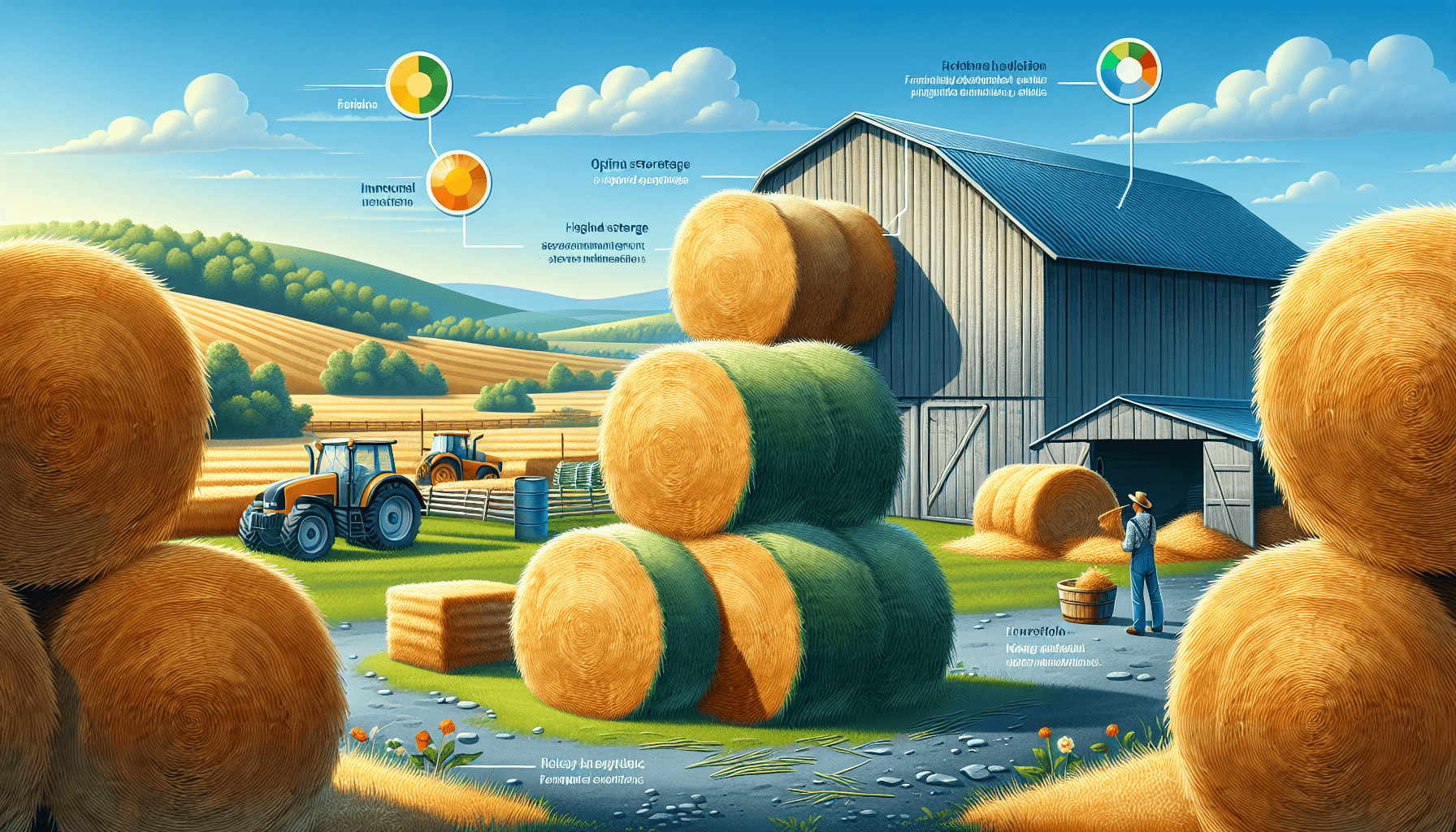
Numerous elements impact the quality of hay, such as the type and variety of forage involved, the conditions under which it grows, its maturity level when harvested, and weather factors during growth and storage periods. To these variables, how well it is managed and fertilized significantly influences hay’s nutritional content.
Subsequent sections will delve into the effects that different harvesting techniques have on hay quality. We’ll also examine how keeping conditions affects this parameter alongside how inspecting hay through visual means and using our senses contribute to assessing its overall quality.
Harvesting Methods
It is essential to harvest hay when plants are at the appropriate maturity level in order to ensure the highest nutritional value. Hay that comes from less mature plants tends to be of superior quality than that harvested from plants that have reached full maturity. The method used for harvesting plays an important role in maintaining nutrient levels and ensuring the hay’s digestibility.
Recognizing how cutting time interplays with different harvest methods is key to creating premium-quality hay. By timing the cut accurately, one can preserve its nutritious benefits and improve its taste appeal for animals being fed this feed.
Storage Conditions
It’s critical to ensure that hay is kept under the right conditions to preserve its nutritional content and prevent deterioration. Hay needs a storage area that offers good airflow while also shielding it from weather, ensuring it remains dry. There are two prevalent ways of storing hay: in square or round bales, each offering specific benefits and drawbacks.
The presence of moisture can adversely affect stored hay quality by fostering mold development and diminishing nutrient content. Over extended periods, even protein levels along with vitamin A concentrations tend to decrease in stored hay.
By adopting appropriate methods for storing hay – whether as round bales or otherwise – one can safeguard its nutritional value and minimize any wastage.
Visual and Sensory Inspection
Inspecting hay both visually and through touch is vital to assess its suitability for livestock consumption. Hay of superior quality should not contain extraneous substances like weeds, soil, or refuse. It is imperative to avoid dusty or moldy hay when feeding goats and sheep due to the potential health hazards it carries.
Hay that exhibits a vibrant green hue coupled with a supple texture suggests that it has been adequately cured and dried. Through diligent examination of hay prior to distribution, agriculturalists can guarantee that their animals are furnished with feed that is both nourishing and free from harm.
Cost Considerations When Buying Hay
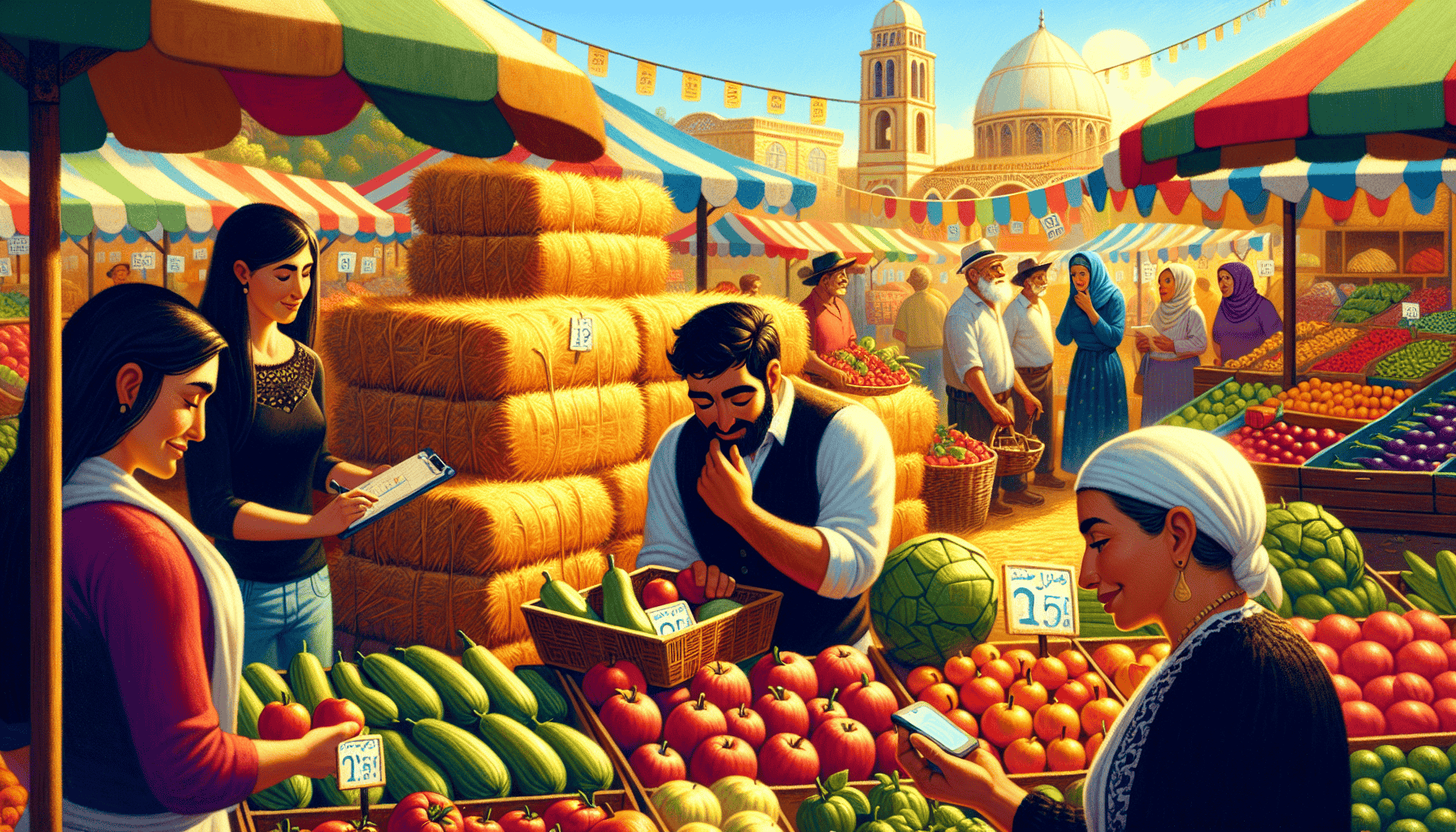
Hay prices fluctuate considerably based on elements like the kind of hay, its quality, time of year, and geographical area. Transporting hay over extended distances may add to the overall expense because of shipping costs. During years when drought conditions prevail, hay can become more expensive as a result of its limited availability.
Subsequent sections will delve into the differences in pricing and identify economical choices for purchasing hay.
Price Variations
Typically, alfalfa hay carries a higher price tag than grass hay due to its richer nutrient profile. The cost for grass hay usually falls between $100 and $200 per ton, whereas alfalfa prices range from $150 up to over $300 per ton. Variations in these costs are influenced by the supply within the region as well as demand on a local level.
The amount of moisture present during baling is another crucial factor that can drive changes in the cost of hay. Transportation distances play a role in determining final prices since longer trips result in increased freight expenses. By keeping these aspects in mind, farmers can more accurately plan their finances when it comes time to purchase even just a few bales of hay.
Budget-Friendly Options
Opting for weedy hay provides a cost-efficient solution that satisfies the dietary needs of livestock without breaking the bank. This type of hay usually comes at a lower price compared to premium varieties, offering an economical alternative for agricultural producers. Similarly, grass hay presents another less expensive choice while still delivering essential nutrients required by farm animals.
Farmers looking to minimize their feed expenses might find these affordable selections beneficial as they aim to maintain both the wellbeing and output levels of their livestock without incurring high costs.
Feeding Tips and Best Practices
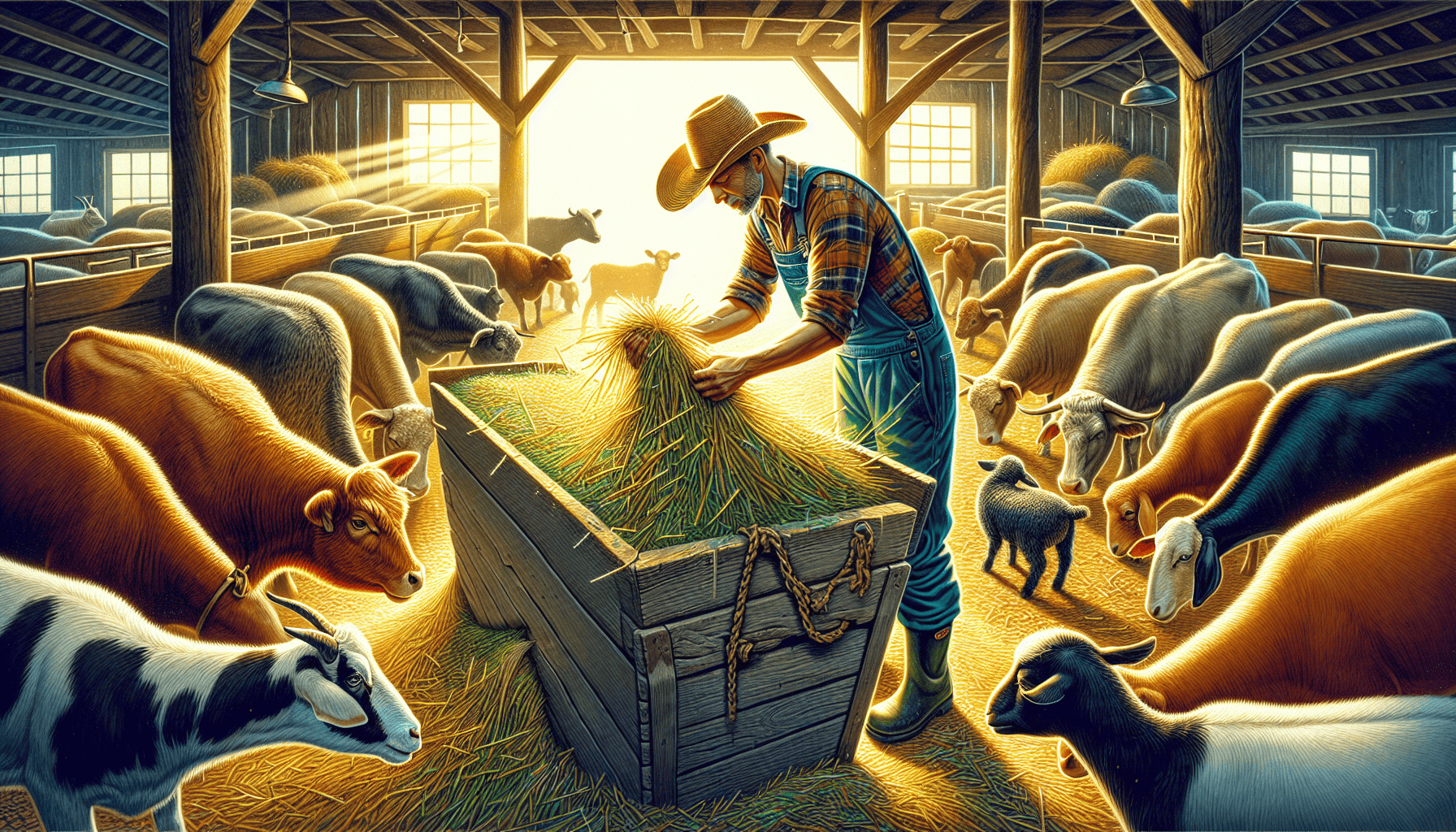
It is crucial to feed hay correctly to maintain the health of livestock and reduce wastage. By evaluating the nutritional value of hay, along with implementing bale feeders for distributing hay bales, you can improve your feeding methods.
The upcoming sections will delve into why it’s vital to introduce dietary changes slowly, blend different kinds of hay together, and keep track of consumption rates.
Gradual Diet Changes
It’s crucial to introduce new types of hay in a slow and measured manner, as this can prevent any gastrointestinal discomfort. By blending the current variety with the new variety over multiple feedings, animals can better adjust when transitioning from grass hay to legume hay.
Taking a gradual approach when altering their diet allows livestock ample time to get used to different feeds while safeguarding their digestive health and ensuring they remain healthy overall.
Mixing Hay Types
Incorporating a variety of hay types into livestock feed can elevate the nutritional value and increase its attractiveness to animals. The blending of distinct hay varieties optimizes the nutrient composition, making it more suited for animal dietary requirements.
Employing a mix of hays allows agriculturalists to assemble a diet that caters to the assorted nutritional demands of their herds or flocks. This method enhances flavor and palatability, which promotes greater intake by the livestock.
Monitoring Intake
Consistently evaluating the consumption of hay allows for the refinement of feeding strategies to more effectively satisfy the dietary requirements of livestock. Watching both their behavior and physical state is key in establishing whether their intake of hay provides sufficient nutrition.
Through vigilant observation of how much food is consumed and adapting as needed, agriculturalists can guarantee that their animals are adequately nourished. This method assists in preserving the well-being and output levels of livestock.
Summary
Choosing the appropriate type of hay—be it grass hay, legume hay, or cereal grain hay—is critical for meeting your livestock’s dietary needs. This choice should take into account the nutritional demands of your animals, coupled with an assessment of the hay quality and financial factors. Ensuring that you adhere to optimal harvesting methods as well as proper storage and examination processes is essential in preserving the integrity of the hay. By employing sound feeding strategies and making educated selections regarding their diet, you can equip your livestock with all they require for robust health and peak performance.
Frequently Asked Questions
What is the main difference between grass hay and legume hay?
Grass hay contains less protein, with a range between 6% and 10%, while legume hays like alfalfa are richer in proteins, carrying levels ranging from 16% to 18%, as well as containing a higher amount of calcium.
Such differences play an essential role when choosing the right type of hay for the dietary needs of livestock or horses.
Why is it important to avoid moldy hay for horses?
It is critical to steer clear of moldy hay to protect the well-being of your horse because it can cause significant health issues affecting their respiratory and digestive systems.
To maintain the good health and contentment of your horse, always opt for hay that is free from mold and high in quality.
How does harvesting time affect the quality of cereal grain hay?
Gathering cereal grain hay at an early stage while the crop remains whole and youthful secures a superior quality.
If harvest is postponed, especially after a drought period, there’s an elevated danger of nitrate toxicity.
What are some budget-friendly options for buying hay?
Choosing grass hay or weedy hay is a cost-effective approach to ensure that your livestock receives the essential nutrients they need without incurring high expenses.
These alternatives often present a less expensive solution but still maintain sufficient quality for nutritional needs.
How can mixing different types of hay benefit livestock?
Incorporating a variety of hay types into livestock diets not only boosts the nutritional value but also increases the feed’s taste, thereby fostering better health for the animals.
Employing this strategy leads to improved growth and efficiency in animal production.

